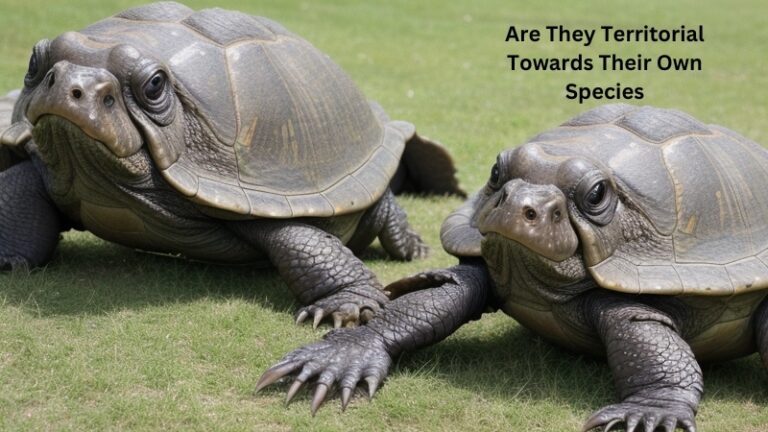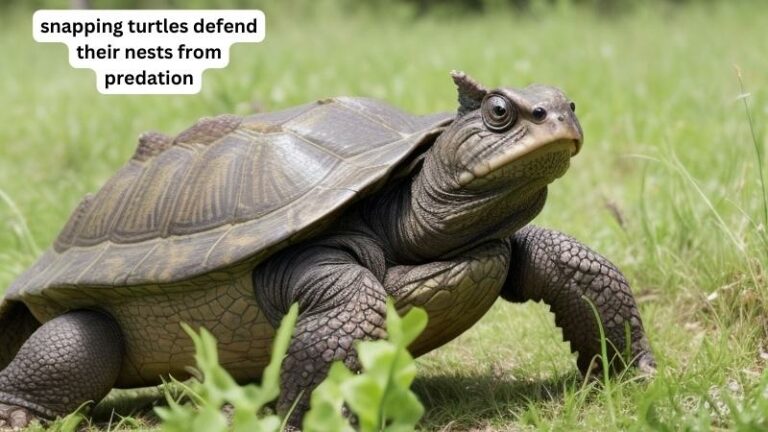Unveiling The Preferred Hunting Technique Of Snapping Turtles
Snapping turtles, fascinating creatures of the aquatic world, have long intrigued nature enthusiasts and researchers alike. When it comes to hunting, these remarkable creatures possess a distinct technique that sets them apart. So, what is the preferred hunting technique of snapping turtles? They rely on their incredible patience and ambush skills as they wait motionlessly at the water’s edge, blending seamlessly with their surroundings. With lightning-fast reflexes, these savvy predators snatch their prey, swiftly retracting their heads and powerful jaws within their armored shells. Let’s dive deeper into the remarkable hunting techniques of snapping turtles and unravel the secrets behind their successful hunts.
What is the preferred hunting technique of snapping turtles?
Snapping turtles are fascinating creatures known for their aggressive behavior and impressive hunting skills. When it comes to hunting, snapping turtles have developed a preferred technique that allows them to catch prey efficiently. In this article, we will delve into the hunting techniques of snapping turtles, exploring their strategies, adaptations, and impressive capabilities.
Basking and Ambushing:
One of the preferred hunting techniques of snapping turtles is basking and ambushing. Snapping turtles are primarily aquatic, but they often emerge from the water to bask on logs or rocks. While basking, they patiently wait for unsuspecting prey to come within striking distance. With their stealthy approach and camouflaged appearance, snapping turtles are masters of ambush.
Camouflage and Adaptations:
Snapping turtles have adapted physical characteristics that aid in their hunting technique. Their shells are often covered in algae, providing excellent camouflage against rocks and logs. The brown coloration of their shells further helps them blend into their surroundings. Additionally, their skin has a rough, knobby texture, mimicking the appearance of the surrounding environment and allowing them to remain inconspicuous while basking.
Patience and Precision:
When a snapping turtle identifies potential prey, it delays its attack until the perfect moment. It remains motionless, relying on its patience and precision to strike when the prey is within range. This technique ensures a greater chance of success, as the snapping turtle can conserve energy while waiting for a suitable opportunity.
Foraging and Opportunistic Feeding:
Snapping turtles are opportunistic feeders, and they employ another preferred hunting technique called foraging. This technique involves actively searching for prey while exploring their aquatic habitat. Snapping turtles have a varied diet that includes fish, amphibians, insects, small mammals, and even vegetation. They use their excellent sense of smell and underwater vision to detect and locate potential food sources.
Sense of Smell
Snapping turtles possess an incredible sense of smell, thanks to an organ called the vomeronasal organ (VNO). This organ detects chemical cues in the water, allowing the turtle to locate food sources, potential mates, or even detect the presence of predators. Their heightened sense of smell plays a crucial role in their hunting technique, enabling them to find prey more efficiently.
Ambush and Quick Strikes
While foraging, snapping turtles use a combination of ambushing and quick strikes to capture prey. They often hide beneath aquatic vegetation or submerged logs, waiting for an unsuspecting animal to pass by. When the prey gets close enough, the snapping turtle lunges forward with remarkable speed, extending its neck and snapping its powerful jaws shut. This quick and forceful strike is facilitated by their strong neck muscles and sharp beak-like jaws.
Bottom-walking and Scavenging
Snapping turtles also employ a hunting technique known as bottom-walking. This method involves walking along the bottom of the water bodies they inhabit, searching for prey and scavenging for food. By exploiting their surroundings and utilizing their excellent sense of touch, they can detect and capture small aquatic organisms that dwell on the bottom.
Touch Sensitivity
Snapping turtles have highly sensitive skin, especially on their heads and necks. This touch sensitivity allows them to feel vibrations and movements in the water, helping them locate hidden prey or detect potential threats. Their limbs are also adapted for walking along the bottom, equipped with strong claws that aid in navigation and grasping prey.
Feeding on Carrion
In addition to hunting live prey, snapping turtles are known to scavenge, feeding on carrion they come across while bottom-walking. This opportunistic behavior allows them to obtain valuable nutrients and supplements their diet when prey is scarce or unavailable.
The preferred hunting technique of snapping turtles combines elements of ambush, foraging, and bottom-walking. Their ability to patiently wait for the perfect moment to strike, their stealthy nature, and their adaptability to different environments make them formidable predators. By using a combination of patience, sharp senses, and powerful jaws, snapping turtles have perfected their hunting techniques, making them highly efficient at capturing their prey.
As we explore the diverse hunting techniques of snapping turtles, we gain a deeper appreciation for their unique adaptations and their vital role in maintaining the balance of ecosystems. Observing these fascinating creatures in their natural habitat offers a glimpse into the intricate world of wildlife and the remarkable strategies they utilize for survival.

Faqs for Preferred Hunting Technique Of Snapping Turtles:
Snapping turtles are known for their unique hunting technique, which involves a combination of patience and ambush. They primarily wait for their prey to come close, then swiftly strike and grab it with their powerful jaws.
Snapping turtles are highly skilled at remaining motionless underwater, blending in with their surroundings, and waiting for the perfect moment to launch an attack. Their long neck and sharp beak allow them to extend their reach and snatch fish, amphibians, birds, small mammals, and even other turtles. This hunting method showcases their ability to adapt and thrive in various environments.
Snapping turtles are excellent at camouflage, often staying still in the water with their shells covered in algae or aquatic vegetation. By blending in with their surroundings, they become virtually invisible to unsuspecting prey. This strategy allows them to patiently wait for the ideal opportunity to strike their prey, ensuring a successful catch.
Snapping turtles possess several advantages in their hunting technique. Their strong jaws and sharp beaks enable them to deliver quick and forceful bites, ensuring a firm grip on their prey.
Additionally, their ability to remain motionless for extended periods enhances their stealth and surprise factor. These adaptations make snapping turtles formidable predators in their aquatic habitats.
While snapping turtles are primarily aquatic creatures, they do possess the capability to hunt on land. They can move surprisingly fast on land, using their strong legs and sharp claws to capture small prey such as insects, worms, and even small mammals.
However, their hunting efficiency tends to be higher in water, as this is where they can fully utilize their specialized techniques and attributes.
Snapping turtles have remarkable jaw strength and are capable of capturing larger prey by using a combination of power and tenacity. When encountering a larger target, such as a waterfowl or a small mammal, they will bite down hard and refuse to let go.
By latching onto their prey with an incredibly firm grip, snapping turtles ensure that their larger catch remains within their reach until they can successfully subdue and consume it.
Besides their main hunting technique of patience and ambush, snapping turtles may also scavenge for carrion. They are opportunistic feeders and will readily consume dead animals they come across in their habitat. This scavenging behavior allows snapping turtles to take advantage of additional food sources and provides them with a diverse diet.
Snapping turtles have a reputation for being aggressive when disturbed or threatened, but they are not typically dangerous to humans during their hunting process. They prefer to avoid direct confrontation and will usually attempt to retreat or defend themselves only if they feel cornered. It is important to exercise caution and give snapping turtles their space, allowing them to continue their natural hunting behaviors without any interference.
Final Thoughts:
The preferred hunting technique of snapping turtles revolves around their remarkable ability to ambush their prey. Snapping turtles are known for their patient and stealthy approach, often lying motionless at the water’s edge or partially submerged, waiting for unsuspecting prey to come close enough for a lightning-fast strike. Their strong jaws and sharp beaks allow them to snatch and devour a variety of prey, including fish, frogs, insects, and even small mammals. Understanding the hunting behavior of snapping turtles provides valuable insights into their unique adaptations and survival strategies in their aquatic habitats.

